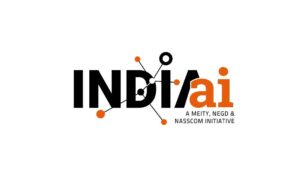By IE&M Research
Banks are not doing well in their core business, but their shares are trading high. Valuations are rich, but the risks of earning downgrades and rising NPAs are high. On the other side, BSE 500 data, 2008-2016, analysis reveals that corporate debt has increased fourfold and so has an interest cost but sales and profits have remained stagnant over last four years. Incremental debt is not resulting in commensurate revenue/profits.
Banks’ model of asset-backed lending has repeatedly come under fire. What should the model be in the new economic order where services and technology are playing a determinant role, but are neglected by banks that seek collateral for loans? Is it not a paradox, banks keep extending loans to manufacturing sector that is struggling to maintain RoC? At the same time institutions are pouring equity in the new age industries that are burning capital at record pace. Does it not reflect poorly on banks’ appraisal skills? Why banks are not extending loans to new-age industries based on cash-flow appraisal? Bank stocks have run up quite a bit of late and, hence, is it the right time to buy bank stocks?
Read on to get the detailed answers.
Indian banks are facing the biggest threat of survival. With disruptive technological innovation, traditional banking has lost its charm. Today, with the emerging digital banking scenario, comparatively less people visit the banks. Secondly, the massive surge in bad assets, both due to difficult environment and an asset quality review, has led to concerns over the ability of the banking system to support the financial needs of the economy, where policy-makers want to accelerate the rate of growth into double digits in the medium-term.
State-owned banks, once seen as the pillars of growth of the Indian economy, are today finding their survival the most difficult. These banks, critical to the Indian economy as they account for more than 70% of the banking business in the country, are now stuck in a vicious cycle of large non-performing assets (NPAs) and slow growth. This is a typical ‘Catch 22 Situation’ where these banks, post demonetization, are flushed with huge deposits, but unable to find lenders as the economy has slowed down. Debates across different regulatory and government machinery are on how to find various alternative measures to revive growth and clear the mess of non-performing loans.
India’s GDP grew 7.9% in 2015-16 against an earlier estimate of 7.6%. The statistics department considers economic growth is likely to decelerate to 7.1% in 2016-17 chiefly because of an industrial slowdown and on account of demonetization. International Monetary Fund (IMF) estimates economy to have slowed sharply to a near three-year low in the final three months of 2016, as demand wilted.
The NPA muddle
The NPA is a loan or advance for which the principal or interest payment remained overdue for a period of 90 days. Banks are required to classify NPAs further into substandard, doubtful and loss assets. NPAs result from what are termed “Bad Loans” or defaults. Default, in the financial parlance, is the failure to meet financial obligations, say non-payment of a loan instalment. NPAs do not just reflect badly in a bank’s account book, they adversely impact the national economy. Bad loans imply redirecting of funds from good projects to bad ones. Hence, the economy suffers due to loss of good projects and failure of bad investments. The RBI has given a clear message to banks to deal with the NPA problem up front, instead of postponing it and worsening it. It has given a deadline of March 2017 to clean up their balance sheets, which also require these lenders to set aside huge chunks of capital in the form of provisions.
How big is the mess?
There are different estimates on NPAs. Officially, at least 20 public sector banks have their gross non-performing assets (GNPAs) above 10% of their total advances, six of them above 15% and one bank has reported GNPA at 22.42%. To name a few – Indian Overseas Bank (22.42%), State Bank of Patiala (19.33%), UCO Bank (17.18%), United Bank of India (15.98%), IDBI Bank (15.16%) and Bank of Maharashtra (15.08%).
According to Care Rating, on December 2016, the total GNPAs of 42-listed banks stood at Rs 7.3 lakh crore. Bad loans now constitute 11% of the gross advances of PSU banks, while total NPAs, including those for public and private banks, were Rs 697,409 crore as of December 2016. GNPAs of state owned banks surged 56.4% to Rs 614,872 crore during the 12-month period ended December 2016, and appear set to rise further. According to the report gross NPAs in September 2016 were 9.1% of advances; they would range between 9.5% and 9.8% in the third quarter of 2016/17 and rise to 10.1-10.4% by March 2017. However, if banks follow the RBI’s NPA recognition norms by March, the ratio could come down to 9.4%.
But according to the RBI’s former deputy governor K C Chakrabarty the total chunk at this stage is around Rs 20 lakh crore, much higher than what is reported by banks and estimated by the central bank and government because one should include all troubled loans including reported bad loans, restructured assets, written off loans and bad loans that are not yet recognised.
Bad loan crisis & SMEs
Bad loan is set to rise further with many units, especially in the small and medium sectors, struggling to repay after being hit by the problems arising out of demonetization. SBI accounts for almost half of the banking sector’s SME portfolio and it has managed to restrict NPAs to Rs 1.08 lakh crore for the December quarter as compared to Rs 1.06 lakh crore for the September quarter, but the numbers still showed a 48.6% jump from Rs 72,791.73 crore a year ago.
The Reserve Bank has warned that public sector banks may continue to register the highest GNPA ratio and the system-level profit after tax (PAT) contracted on a y-o-y basis in the first half of 2016-17. “Under the baseline scenario, the PSBs’ GNPA ratio may increase to 12.5 per cent in March 2017 and then to 12.9 per cent in March 2018 from 11.8 per cent in September 2016, which could increase further under a severe stress scenario,” the RBI’s Financial Stability Report said.
Strategic Debt Restructuring scheme
Under the Strategic Debt Restructuring (SDR) scheme, banks were given an opportunity to convert the loan amount into 51% equity that was supposed to be sold to the highest bidders, once the firm became viable. “This measure was unable to help banks resolve their bad loan problem, as only two sales have taken place through this measure due to viability issues. It was observed that difficulties in finding buyers and disagreement over valuations were challenges in implementation,” said Care Ratings.
In the case of Sustainable Structuring of Stressed Assets (S4A) scheme, banks were unwilling to grant write-downs as there were no incentives to do so, and write-downs of large debtors could quickly exhaust banks’ capital cushions. The 5/25 scheme was derailed because the refinancing was done at a higher rate of interest so that banks could preserve the net present value (NPV) of the loan amount. In the asset reconstruction scheme, the major problem was that asset reconstruction companies (ARCs) found it difficult to resolve the assets they had purchased from the banks and, therefore, wanted to purchase the loans only at low prices. Consequently, banks were reluctant to sell them loans on a large scale.
The RBI had discontinued fresh corporate debt restructuring (CDR) with effect from April 1, 2016.
Asset reconstruction companies (ARCs) have seen limited success, owing to scarce capital and delays in the functioning of the Debt Recovery Tribunals. There is now an urgent need to kick-start the resolution machinery under the new Bankruptcy Code. Also, banks need to be empowered to take huge haircuts to restore viability in some projects. For this, the Centre needs to move ahead on structural reforms — be it operationalising the Banks Board Bureau, or setting out a clear roadmap for consolidation within the sector, or reducing its stake in PSBs.
Demonetization – a curse turned boon
The biggest benefit of demonetization has been the sharp increase in the deposit base of banks. Now banks are sitting on a huge pile of funds, which has enabled them to reduce interest rates on deposits and, in turn, bring down their cost of funds and increase margins. If almost Rs 15 lakh crore has come into the banking system as deposits, then nearly 30-40% of this is expected to remain in the system by the end of 2016/17. Banks with higher CASA ratios will gain the most, as these deposits are low-cost and will, thus, increase margins. Not to forget, banks will have to pay interest on the new deposits, which they may not be able to deploy profitably due to low credit demand. It will impact banks’ net interest margins. Further, the RBI’s directive on lower charges for cards and payments will impact fee income growth.
Banking bailout cost ‘manageable’
According to the International Monetary Fund the recapitalisation costs of struggling banks should be manageable at between 1.5 and 2.4% of forecast GDP and it would be affordable even under a negative scenario to tackle $130 billion in stressed loans. Of that total, the government’s share would be between 1.0 and 1.6% GDP over the four years to March 2019, assuming that 40% of loans have to be provided against. The IMF also emphasized the importance of strengthening banks’ capital buffers, reforming their governance and boosting the capacity of mechanisms to get troubled loans off their books. However, in case of a rise in the provisioning ratio to 70%, cumulative recapitalisation needs would increase to 3.3-4.2% of forecast GDP in the fiscal year to March 2019, with a government share of 2.2-2.8%.
Banking Index and the way ahead
The S&P BSE Banking Index, a proxy for the sector’s performance, has returned around 28% in the last calendar year and banking sector funds have done comparatively better beating all equity mutual fund categories. Fund managers have been increasing their allocation to banking stocks for quite some time due to the cleanup exercise initiated by the RBI. As per the latest data available from the Sebi, mutual funds’ allocation for bank stocks hit a record high of Rs 1.16 lakh crore in end-January. In comparison, fund managers had allocated Rs 78,644 crore for bank shares in the year-ago period. In percentage terms, exposure to banking stocks was at 20.91% of equity AUM in January as against 20.84% in December-end.
However, the investors should not be distracted and must remember that fund managers cannot afford to take a bearish call on the banking stocks, given the high weightage attached to the index. While selecting a stock, they must see if the bank has control over its net interest margins and is able to maintain them over at least a few quarters. Typically, a retail bank’s margin is over 4 per cent, while a corporate bank’s margin is 2.5-3 per cent.
Big problems need innovative solutions
Some of the large state-owned lenders, after reporting record losses and tumultuous performance last fiscal, have crawled back into the black. But the recovery is nothing more than an optical treat, although an incremental addition to the stockpile of bad loans has slowed, leading to a fall in provisioning requirement and an improvement in earnings. Still, with core earnings continuing to shrink on account of tepid credit offtake many banks have only just managed to stay above water; in most cases bad loan provisions are equal to or many times banks’ operating profit.
Problems of NPAs and loan growth at multi-year lows due to poor demand can not be tackled following the traditional method. Times have changed and the external environment is so challenging, it’s time these banks have to start rethinking about changing their raising as well as lending model. With disruptive technological innovation, traditional banking model has become obsolete and banks will no longer be able to survive in the fast changing scenario. The digital banking has cut the frequent bank visits for various requirements. Transferring money and processing loan documents are just a click away.
Now banking industry has to focus on two major points-
- Banks so far have focussed on creating liabilities franchise. Going forward, with increased digitization, banks must reorient on creating asset franchise and improve loan quality. Investment in skill development of its officials is the need of the hour. Their inefficiency and old model also have led to the rising NPAs.
- As the economy has transformed from manufacturing to services, the banks’ lending model must evolve from collateral-based lending to cash-flow based lending. So the new-age technology companies are also able to enjoy the easy credit facility. With more than 62% dominant service sector, credit officer has to go out rather than expecting the companies to come to the branches. Their attitude needs a radical shift.
Why Asset-based lending is a bad idea
The bank’s lending model needs a complete re-structuring. Banks so far had been chasing big project finance and following asset based lending model. Now, instead focusing on asset-based model, banks should now focus on cash-flow model as this will ensure timely payments of loans. Cash-flow lending will cut defaults. Further, instead of chasing big projects and big lenders, banks should focus on Small and Medium Enterprises which now constitute a large portion of the economy. The Loan tick size of these firms is relatively small and defaults very limited. Here these banking management needs to learn a few tips from the NBFCs.
It’s a known fact, most promoters in the country tend to overprice assets at the time of seeking loans from banks thus creating a false bubble in the system. Invariably, these funds obtained are diverted into real estate business or building personal assets. This puts the entire banking system at stake.
Using technology and artificial intelligence
Also, banks need to make the shift towards technology and start using artificial intelligence and big data to start online monitoring to keep an eye on large loans in their portfolio. So far, banks have been using these tools, with relative success, to track retail loans. It is perhaps surprising that similar measures have not been applied on big corporate loans. With technology a lot of data is now available online and cash flows are getting captured. Also, a lot of information with the ministry of corporate affairs now digitised, it’s easy to know whether the money is moving from the companies to the promoters’ investment company. Similarly, with goods and service taxes, banks will have all data – excise duty records, sales tax, and surcharge, to determine if the turnover is genuine. Technology can help banks monitor companies’ cash flows, watch on monetary transactions of group entities and also check speculative calls on currency risks.
Stay slim and stop the expansion
Now the big idea which will make the Indian banking sector moving at a fast pace is staying slim – no branch expansion. The advent of technological innovation has changed the scenario drastically. However, it has brought about a transformation by enabling disintermediation and aggregation. State-owned banks, which continue face legacy issue should now start investing in technology and stop investing in branch expansion. They should focus on one-man banking and correspondent banking. With technology advancement, banks are just a click away from the customers. In fact, by adopting technology the additional investment in fixed assets will be down substantially which can be used by the banks for better loan deployment.
Consolidation will be the panacea
India only needs four or five big banks. As it is the survival of many PSU banks is now at stake. The government is rightly considering merger as one of the options to rid of the current situation. It has recently approved the merger of State Bank of India (SBI) with five associate banks, but it seems the government intends to wait until the NPA situation is ameliorated, before pursuing further consolidation of the banking sector.






















